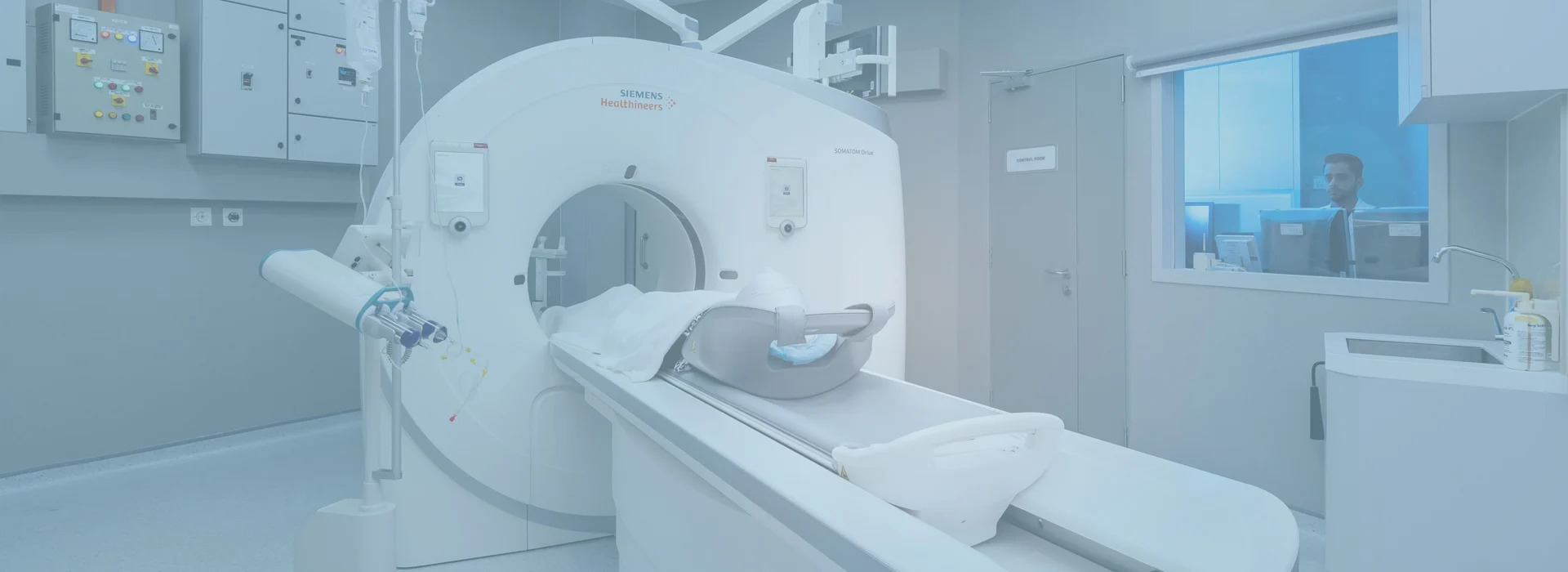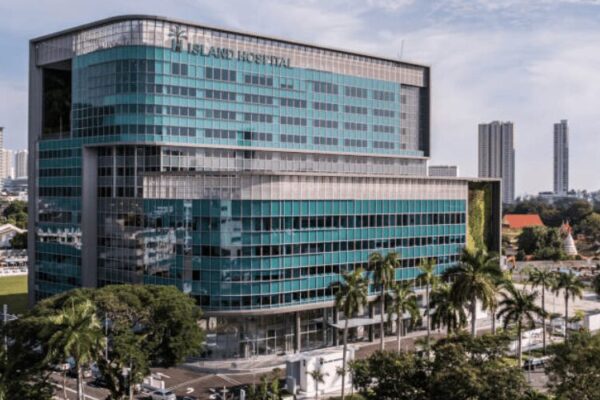
03 Oct Is Physiotherapy the Answer? Relief Chronic Back Pain Without Surgery
Is Physiotherapy the Answer? Relief Chronic Back Pain Without Surgery
By Island Hospital | October 3, 2025 10:34:09 AM
Dealing with constant back pain can feel like an endless battle. The constant ache, the sudden sharp pains, and the daily struggle in mobility can drain your energy and steal your joy. It’s easy to feel trapped, with surgery seeming like the only way out.
But what if there was another way to find lasting relief without going under the knife, facing long recovery times, or taking on the risks that come with surgery?
The good news is that for countless individuals, the answer is a resounding yes. Physiotherapy can, and often does, fix chronic back pain without surgery.
Explore the benefits of physiotherapy, healing techniques, and what you can realistically expect on your journey to recovery.
We’ll show you why this non-invasive approach is a primary solution for back pain, and how our experts at Island Hospital’s Rehabilitation & Physiotherapy Centre can be your trusted partners on this transformative journey.
Chronic Back Pain is More Than Just a “Bad Back”
Chronic back pain is defined as pain that persists for 3 months or more, long after the initial injury or cause should have healed. Unlike acute pain, which is a warning signal of an issue, chronic pain can become a condition in itself. It’s often driven by a complex interplay of factors, including muscle weakness, poor posture, nerve irritation, inflammation, psychological stress, and is often age-related.
Common culprits behind chronic back pain include:
- Muscle strains and ligament sprains
- Herniated or bulging discs
- Sciatica (nerve pain radiating down the leg)
- Degenerative disc disease or arthritis
- Spinal stenosis (narrowing of the spinal canal)
- Poor posture and muscle imbalances
For years, many believed the only definitive fix for these issues was surgery. However, with advances in medical research and therapeutic techniques, we now know that surgery is most effective for a small percentage of cases and should be considered a last resort.
In fact, many patients have opted for a more active approach like physiotherapy is the key to lasting recovery.
How Physiotherapy Works for Chronic Back Pain
Physiotherapy is not a one-size-fits-all solution, nor is it simply about a few stretches. It’s a comprehensive, patient-centred, and evidence-based approach that addresses the root cause of your pain.
During your physio session, your physiotherapist will detect the underlying mechanical, muscular, or neurological issues contributing to your discomfort. They then build a personalised treatment plan to:
- Correct poor posture and movement patterns
- Empower you with the knowledge to prevent future pain
- Reduce inflammation and pain
- Restore your body’s natural movement and function
- Strengthen the core muscles that support your spine
This active approach is what truly sets physiotherapy apart from passive treatments like pain medication, which only masks the symptoms.
Understand when traditional rehabilitation isn’t right for you! Check out other smarter and faster ways to regain your strength and well-being in this article: Why Traditional Rehab Might Be Slowing You Down.
Specific Physiotherapy Techniques & Their Suitability
A skilled physiotherapist uses a diverse range of techniques, specifically tailored to your unique condition. Here’s a look at some of the most effective methods and how they’re applied.
1. Manual Therapy (Hands-on Techniques)
Your physiotherapist will use their hands to diagnose and treat your condition.
- Soft Tissue Mobilisation/Massage
Gentle pressure and stretching are used to release muscle tension, reduce spasms, and improve blood flow. This is highly effective for pain caused by tight muscles and poor circulation.

- Joint Mobilisation & Manipulation
For stiff or “locked” joints in the spine, these techniques use gentle, rhythmic movements or a quick, precise thrust to restore proper joint mechanics and reduce stiffness, which is particularly helpful for conditions like arthritis or facet joint dysfunction.
- Myofascial Release
This technique focuses on the fascia, a connective tissue that can become tight and restrict movement. Releasing these restrictions can significantly reduce chronic, widespread pain.
2. Therapeutic Exercise
This is the core of physiotherapy. You’ll be guided through specific exercises designed to restore your strength, mobility, and stability.
- Core Stabilisation Exercises
Weak core muscles are a primary cause of back pain. Exercises like planks, glute bridges, and bird-dogs strengthen the deep abdominal and back muscles to provide a strong, stable base for your spine. This is a crucial component for patients with disc-related issues or instability.
- The McKenzie Method (MDT)
This method is highly effective for disc-related pain, including herniated discs and sciatica. It uses a series of repeated movements to “centralise” pain, bringing it from the limbs back to the spine where it is less intense and more manageable.
- Stretching & Flexibility Exercises
Tight hamstrings, hip flexors, or gluteal muscles can pull on the pelvis and spine, leading to pain. Your physiotherapist will prescribe stretches to restore muscle length and improve overall spinal mobility.
- Motor Control Training
This focuses on re-educating your nervous system and muscles to move in a more efficient and pain-free way, helping to correct faulty movement patterns that led to the pain in the first place.
3. Adjunctive Modalities & Postural Correction
- Transcutaneous Electrical Nerve Stimulation (TENS)
A TENS machine uses a low-voltage electrical current to block pain signals and trigger the release of endorphins (your body’s natural painkillers). It’s a useful tool for providing temporary pain relief, allowing you to participate more fully in your exercises.

- Postural & Ergonomic Advice
Your physiotherapist will assess your posture during sitting, standing, and lifting, and provide personalised advice on how to make your home and work environment more spine-friendly.
How We Tailor It
- For a herniated disc, our physiotherapist might focus on the McKenzie Method and core stability.
- For sciatica, they might combine manual therapy to release muscle tension, nerve glides to free up the nerve, and core strengthening.
- If your pain stems from muscle strain, the focus will be on soft tissue work and a progressive strengthening programme.
The difference between sprains and strains are more than just an alphabet. Check out this guide to compare their various aspects here: Sprain Vs Strain: Understand the Difference Between Common Injuries.
The Transformative Benefits of Physiotherapy
Choosing physiotherapy over surgery offers significant advantages:
- Real Pain Reduction
Physiotherapy goes beyond temporary fixes as it addresses the root cause of the pain, not just the symptoms, leading to more lasting relief. For example, if your pain is from a pinched nerve, your physiotherapist will use techniques to decompress it.
- Improved Function & Mobility
Physiotherapy helps you regain the ability to perform daily activities without pain. A therapist designs a personalised program that includes exercises and stretches to improve your range of motion, flexibility, and coordination. This means you’ll be able to move, bend, and lift with confidence and less discomfort, getting you back to your normal routine and hobbies.
- Enhanced Strength & Stability
Another key component of physiotherapy is strengthening. Your physiotherapy sessions will also focus on the muscles that support your spine and joints, to build a stronger, more resilient back. This improved strength and stability allow your body to better handle the stresses of daily life, such as sitting at a desk or carrying groceries, preventing future injuries.
- Prevention of Recurrence
Your physiotherapist acts as a coach, teaching you proper body mechanics, posture, and self-management techniques. To help prevent future flare-ups, your physiotherapist will provide a personalised exercise plan and the knowledge to recognise warning signs. This education is a powerful tool for long-term health.
- Avoidance of Surgical Risks
Surgery, while sometimes necessary, comes with inherent risks, including infection, blood clots, and complications from anesthesia. Physiotherapy, on the other hand, is non-invasive. It’s a safe and effective alternative with minimal to no side effects. You avoid the lengthy recovery period, potential for complications, and the stress that comes with a major medical procedure.
Your Journey to Recovery: Treatment Timelines & Expected Outcomes
One of the biggest questions people have is: “How long will this take?” While there’s no single answer, here’s a realistic breakdown of what you can expect from a physiotherapy programme.
- Initial Relief (Weeks 1-3)
During this phase, the primary goal is to reduce your pain and inflammation. Through manual therapy and gentle exercises, you should start to feel noticeable relief and improved mobility. You’ll be educated on pain management and proper posture.
- Functional Improvement (Weeks 4-12)
This is where significant progress happens. Your treatment will become more active, focusing on strengthening muscles, improving your range of motion, and correcting underlying movement patterns. With consistent effort, you will see a substantial improvement in your ability to perform daily activities.
- Long-Term Management (Beyond 3 Months)
For chronic conditions, your physiotherapist will work with you to create a long-term maintenance programme. This might involve a regular home exercise routine and occasional follow-up sessions to ensure you stay on track and prevent the pain from returning.
Factors Influencing Your Outcome
Success in physiotherapy is a collaborative effort, with your commitment to the treatment plan being the most crucial factor in a positive outcome. Here are some factors why your recovery may take a longer time:
- Patient Compliance: Diligently following your home exercise plan is the single most important factor in your success.
- Severity of Your Condition: More severe or long-standing conditions may take longer to heal.
- Underlying Diagnosis: Some conditions respond more quickly to treatment than others.
- Lifestyle: Factors like sleep, diet, stress, and activity levels all play a critical role in your recovery.
Is Physiotherapy Right for Your Chronic Back Pain?
If you’re living with persistent back pain that is affecting your quality of life, physiotherapy is almost always the recommended first step before considering surgery. The crucial first step is to get an accurate diagnosis.
To create an effective treatment plan, your physiotherapist or a medical specialist needs to understand the exact cause of your pain.
At Island Hospital, we offer comprehensive diagnostic services to provide that clarity. Our expert team will conduct a thorough physical evaluation and, if necessary, recommend diagnostic imaging like an MRI to pinpoint the source of your pain.
FAQ
1. How long does a typical physiotherapy programme take to fix chronic back pain?
The timeline for recovery varies greatly depending on the individual, the severity of the pain, and the underlying condition. You can often expect to feel some initial relief within the first 2-3 weeks. Significant functional improvement and pain reduction typically occur within 4-12 weeks of consistent sessions and home exercises. For chronic, long-standing issues, a long-term maintenance plan may be necessary to prevent the pain from returning.
2. Is physiotherapy effective for all types of chronic back pain?
For the vast majority of chronic back pain cases, physiotherapy is a highly effective, first-line treatment. Our physiotherapists are skilled in tailoring specific techniques—such as the McKenzie Method for disc issues or core stabilisation for instability—to suit conditions like herniated discs, sciatica, and arthritis. A proper diagnosis is key, which is why we recommend a consultation with our specialists to determine the best treatment path for you.
3. What if my back pain is so severe that I can’t do any exercises?
A common misconception is that physiotherapy is only for those who are already mobile. An expert physiotherapist at Island Hospital will start your treatment where you are, using gentle manual therapy and modalities like TENS to reduce pain and inflammation first. The goal is to build a foundation of strength and mobility gradually, progressing to more active exercises only when your body is ready. We will never push you beyond your limits.
4. How does physiotherapy compare to other non-surgical treatments like medication or injections?
Unlike medication or injections, which primarily manage the symptoms of pain, physiotherapy is an active, long-term solution. It empowers you by addressing the root cause of the problem, such as muscle imbalances, poor posture, and joint stiffness. While other treatments can be a useful part of a pain management strategy, physiotherapy is the core component that gives you the tools to heal and prevent pain from returning.
5. How do I know if I’m a good candidate for physiotherapy at Island Hospital?
If you have persistent back pain that is affecting your daily life and you want to explore non-surgical options, you are an excellent candidate. The best way to know for certain is to book a diagnostic assessment with our specialists. We will conduct a thorough physical evaluation and, if needed, use our advanced diagnostic services to pinpoint the exact cause of your pain, allowing us to build a personalised treatment plan for you.






